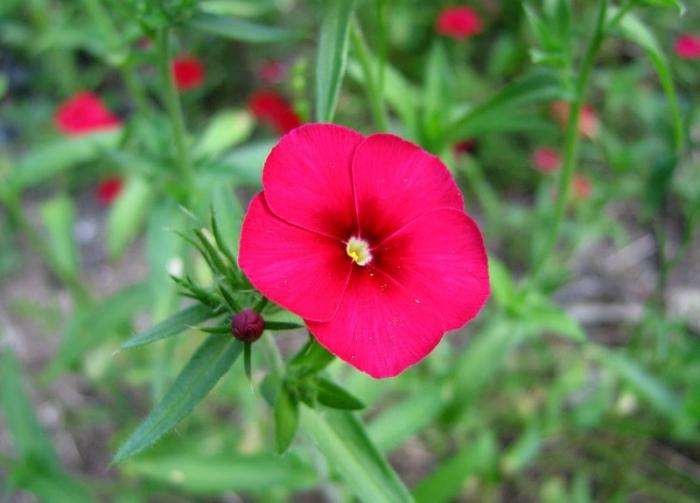Phlox is subulate - decoration of any garden
Despite the fact that the fashion for flowers is constantlyvaries, among them there are those that are always popular. An indispensable ornament of the garden was and still is the phyllaceous subulate. This name is due to the shape of the leaves of the plant. They are narrow, with pointed tips, firm and slightly prickly to the touch. The length of the leaves is 10-15 mm. This rather unpretentious creeping plant 10-15 cm high blooms. Its leaves are very tightly arranged on the stem, which resembles a green twig of spruce. Phlox is subulate, unlike other species of this plant, does not fall off for the winter. In the spring, new leaves and buds of flowers with short petioles appear in the leaf axils.
During flowering the phyllos is subulate very beautiful. The overgrown plant covers large areas of the earth. It blooms in the spring. At this time plants are strewn with bright colors so that leaves are often not visible. Wilted flowers discreetly fall through the foliage, so the phlox does not lose its decorative until the winter. There are several varieties of this plant: with pink, red, pale lilac, purple and white flowers. Phlox is subulate - very unpretentious plant. It is winter-hardy, it grows well in the sun. He prefers light, not overmoistened soil. It can grow on clay soils, if you add sand to them.
To fertilize the land before planting, you need to makeone bucket of peat or compost, 200 grams of wood ash, 50 grams of superphosphate per 1 sq.m. The flower is best propagated by cuttings of 11-12 cm. They are planted with an interval of 6-8 cm. When planting cuttings 2/3 of their length should be at a depth of 4 cm and placed horizontally. Rooted cuttings until the end of summer will give many young shoots. It is advisable at one place to not grow an awl-sized phloa for more than four years.
Care is in the spring feeding of urea. For abundant flowering 2-3 watering infusion Mullein, which adds 20 grams of superphosphate. The main disease of this plant is powdery mildew. To prevent the disease from April to twice a month, spraying with a soap-copper solution (100 g household soap, 20 g copper sulfate per bucket of water).
Best of all, the phyllops are awl-like in rockeriesand on the Alpine hills. It looks wonderful also as a curb plant. It is often planted with other species, for example, with a flock spread out. Its height is up to 30 cm. On thin, strong stems there are pointed, ovate leaves 5 cm. The flowers are fragrant, small, with lilac, white, violet color, collected in inflorescences. It blooms in May.
Among this species there are other very beautifulphloxes. Their varieties are very diverse. Each gardener will be able to pick up flower beds and garden phloxes with different colors or sizes of stems. Picking up several species and varieties, you can achieve flowering from spring to autumn.
After the flowering of the phlox, the worm-shaped one spreads open, after it - Drummond. And after him, until the very late autumn, the most common flock on our clubs is the flock of the panicle.
All kinds and varieties of phlox are undemanding. Most of them are perennials with flowers of the most diverse colors. In total there are more than 60 species. They are divided into two groups:
- cluster (30-150 cm) - paniculate, Ardensa, stoloniferous;
- creeping (5-25 cm) - subulate, charming, Douglas, spread out.
For the duration of flowering, they are subdividedfor short-flowering, long-flowering and medium term. All phlox are hygrophilous and frost-resistant. With a lack of moisture, flowering is weakened. They divide bushes from spring to autumn. To obtain abundant flowering, the tips of young shoots are pricked. In this case, repeated blooming often occurs.
</ p>




